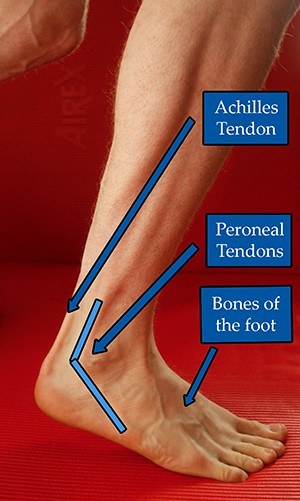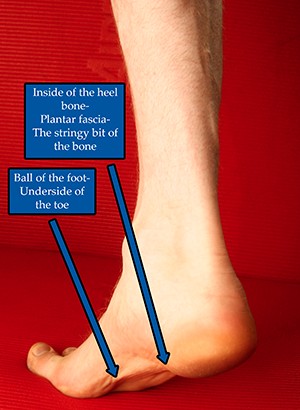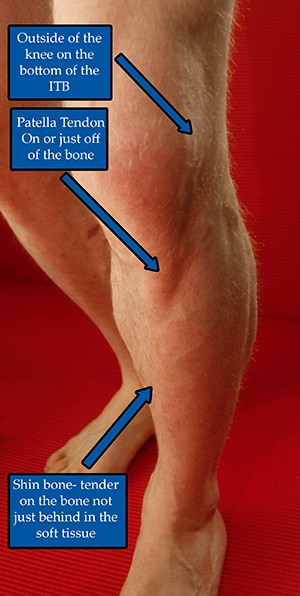Knowing when pain is at the level where you should stop running is difficult to gauge. Find out from physio Mark Buckingham how to assess the point when pain means you should halt your running activities.
Anyone who has trained even moderately hard will have experienced some pain somewhere. If you have not then you are probably not working hard enough! If you stopped running for every ache and pain you would hardly get going. However, pain is your body’s system for telling you it is under stress and is potentially being damaged so should not be completely ignored.
Understanding what is ‘acceptable’ pain that can be run through is something that only really comes with experience. I would like to try and provide some framework for this.
Pain is the result of tissues becoming stressed beyond their capacity. This is true of muscles, ligament, tendons and all parts of the bone system.
Broken into ‘simple’ pigeon holes you can interpret the signs like this:
1. Dull ache/tired type of pain when running – little bit tight afterwards for 24 hours or so then clears = warning sign that tissues are struggling.
a. Ok to continue training but think about why the area might be stressed. This could be the type of session, a change in surface , trainers wearing out?
b. Treat it as a bit of an early warning
2. Strong ache when running and a limping, ‘ouch’ type of tightness afterwards for more than 24 hours. Especially sore the next morning.
a. This means you have damaged some tissues.
b. Should you run? Try a simple test. If it is your leg then does it give sharp pain to hop or lunge 15 times?
i. If yes then do not run.
ii. If no then with a 5 min self-massage and ease into the run and ice for 10 mins afterwards.
3. Sharp pain when running, immediately sore and painful. Painful to hop and lunge or even to walk/stairs.
a. You have significantly damaged tissues which require you to rest to allow it to heal.
b. The usual time frame will be 7 to 10 days but you can use the self-tests outlined below to guide you.
4. Big red flags
a. Pain on bones, very tender spots to press. Possible stress response
b. Pain at night and rest as well as when using it. Possible stress fracture
c. Hot swollen calf muscle which is constantly tense and very painful. Possible DVT
d. Numbness, burning pain and pins and needles are signs of nerves being irritated. Seek immediate medical advice for any of these.
Look for the reasons why it hurts
There will be a reason why the area has become sore. Clearly if you have rolled your ankle then that is the cause, but more often with runners injury is not a traumatic and sudden but a build-up of load and stress. Causes are:
1. Change in training load
a. Increased speed work
b. Longer runs
c. Hills
2. Change in surface
a. More road work
b. Drier ground
c. More track work
3. Change in shoes
a. Trainers wearing out – 400 miles maximum
b. Moving into spikes
c. Change in trainer type
4. Fatigue/illness leading to alteration in running pattern
Most training changes described above are introduced with the best of intentions. However if your body produces pain then it is important that you work out why so that you do not continue to damage it. You have to listen to your body to stop turning a bit of soreness into a proper injury and time off of running. The most experienced athletes are excellent at listening to their bodies and have a longer career as a result. As you get older you also have to be smarter because you do not heal as quickly.
So if you get pain – especially repeatedly in one area have a look at what has changed and rejig it. It might have seemed sensible and reasonable but clearly your body is telling you differently. Don’t be stubborn!
Simple progressive tests to see if you are ready to run again
In order of stress – so if number 2 is sore then don’t do 3 and don’t run.
Heel rises on the spot 3 times 20 – pain free
Hopping – on the spot – 4 times 15 hops – pain free
Lunging – 4 times 15 to different angles – pain free
Jogging on the spot - 2 mins – pain free
3 times up and down stairs – pain free
5 min jog around the block – pain free
Start with an easy 15 min run and see how it reacts over 24 hours.
Where does it hurt?
Below are some images with areas that you should be particularly cautious of if you get pain. It is often difficult to locate where the pain is coming from but if the areas labelled below are sore then be extra careful as they relate to some of the more difficult areas to deal with. Click on the images below to link to specific articles that deal with each issue further.

















